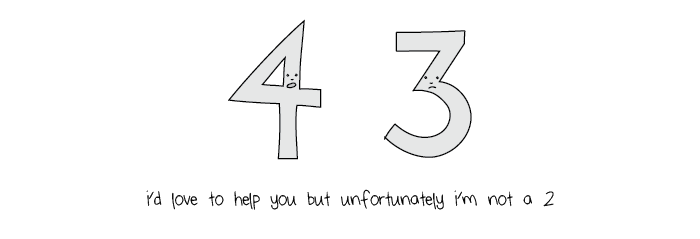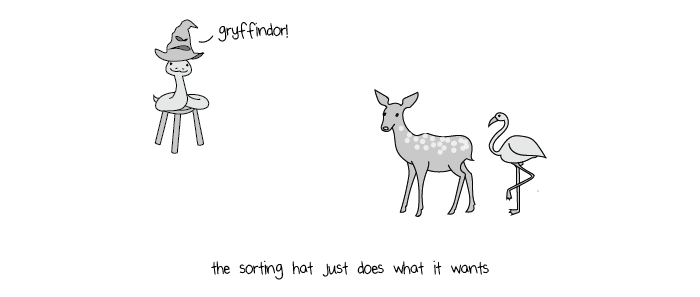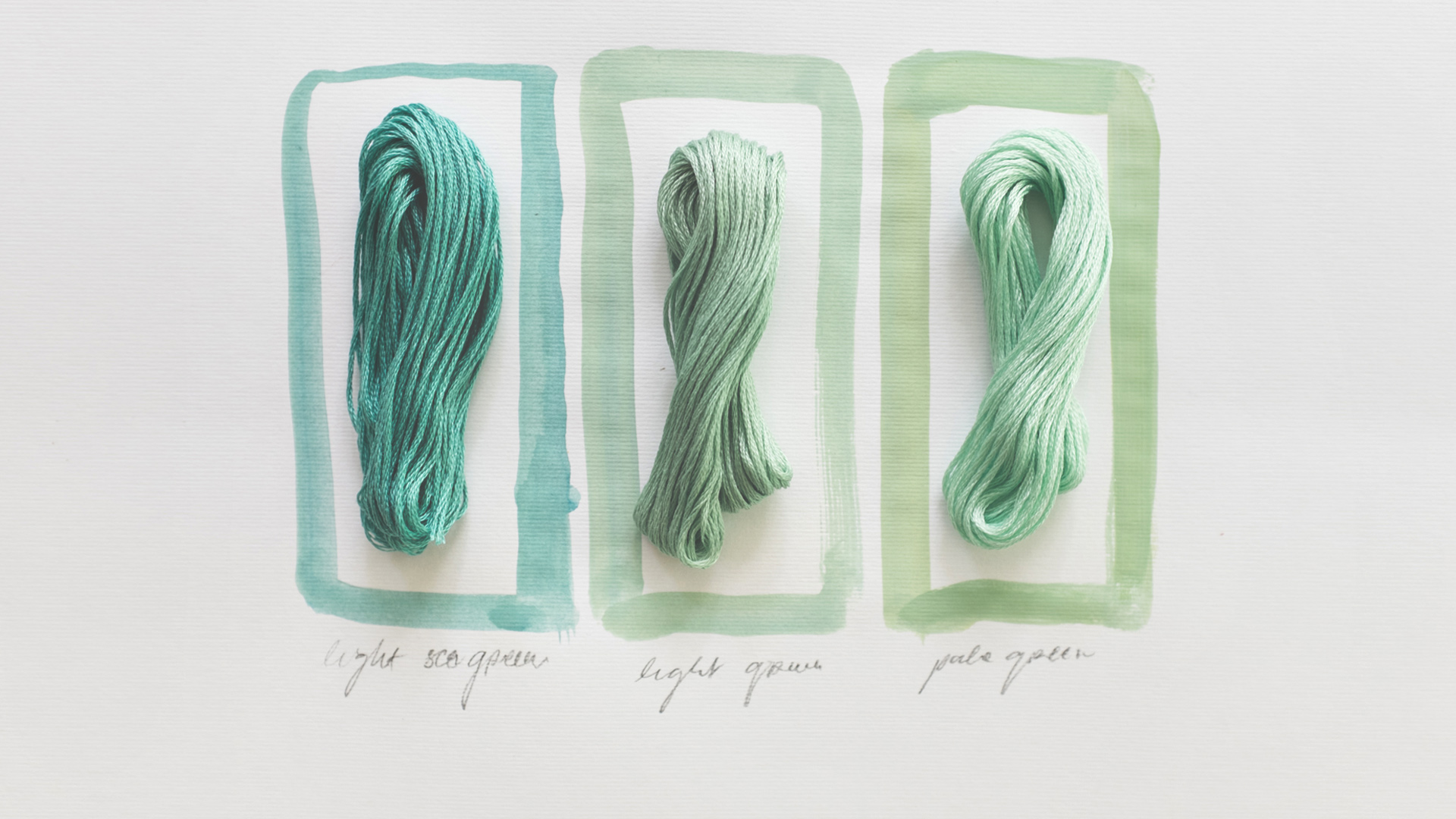
An Illustrated Guide to Categorizing Yourself
By Liz Fosslien and Mollie West
Robert Benchley once remarked that there are two kinds of people in the world—those who divide people into two kinds and those who don’t.
We are the former. If you’re a reader of Quiet Revolution, you probably love personality tests as much as we do. We’ve got the list you’ve been looking for!
1) The Myers-Briggs Type Indicator (MBTI) is the most famous. Based on the typological theory described by Carl Jung, it was created in 1943 by a mother-daughter team, Katherine Briggs and her daughter Isabel Myers. Neither Katherine nor Isabel were trained in psychology, although Katherine was a devoted reader of Dr. Jung.
Today, it’s used for evaluating job candidates, executive development, and even marriage counseling. The test looks at four dimensions of personality, allowing the test-taker to indicate a preference for either of the two choices on each dimension. The dichotomous dimensions are introversion/extroversion, sensing/intuition, thinking/feeling, and judging/perceiving.
Each preference is coded by a letter, and the resulting personality type will have four letters, describing a person’s preference for the way they perceive the world and like to make decisions. Two examples of 16 possible personality types are ISTP: The Analyzer Operator or ENFJ: The Envisioner Mentor.
The test is so widely used that IMDB lists the personalities of fictional characters.
Take the Myers-Briggs Type Indicator test here (at a cost of about $50).
 2) The Big Five (or five-factor) is the test that’s more commonly accepted within the field of psychology today. Francis Galton created an early version of the test in the 1880s, and in 1980, American psychologist Lewis Goldberg gave it the trendy name of Big Five, bringing the test into wider use. According to the test, there are five dimensional factors of personality: extroversion, neuroticism, conscientiousness, agreeableness, and openness to experience.
2) The Big Five (or five-factor) is the test that’s more commonly accepted within the field of psychology today. Francis Galton created an early version of the test in the 1880s, and in 1980, American psychologist Lewis Goldberg gave it the trendy name of Big Five, bringing the test into wider use. According to the test, there are five dimensional factors of personality: extroversion, neuroticism, conscientiousness, agreeableness, and openness to experience.

Unlike in the MBTI, every factor is a spectrum, so you can be somewhere between extroversion and introversion.
Take a version of the Big Five test here.
 3) The Enneagram test is popular in both business and spiritual circles. Its origins are the most fuzzy and least research-based. Unlike in other personality tests, one of the Enneagram’s focus areas is on the relationship between the types. All of the nine types are related to each other by connecting lines around a circle. Like in the MBTI, each type has a name: 3 is the Achiever, and 8 is the Challenger.
3) The Enneagram test is popular in both business and spiritual circles. Its origins are the most fuzzy and least research-based. Unlike in other personality tests, one of the Enneagram’s focus areas is on the relationship between the types. All of the nine types are related to each other by connecting lines around a circle. Like in the MBTI, each type has a name: 3 is the Achiever, and 8 is the Challenger.
Each type is described incredibly in depth, with information about its ego fixation, holy idea, basic fear, basic desire, temptation, vice, and virtue.
Take the Enneagram test here.

4) The Hogan Personality Inventory (HPI) differentiates itself by describing only bright-side personality qualities—qualities that describe how we relate to others when we are at our best. Psychologists Robert and Joyce Hogan created it in 1980 specifically as personality assessment designed for use in business settings.
Participants take a test comprised of 206 true-false items that measure personality along seven scales: adjustment, ambition, sociability, interpersonal sensitivity, prudence, inquisitive, and learning approach. Example questions include:
- Y/N: I like everyone I meet. “This question evaluates someone’s empathy and sensitivity. People who answer ‘yes’ tend to be more prosocial and considerate toward others,” explained Tomas Chamorro-Premuzic, CEO of Hogan Assessment Systems and a professor of business psychology at University College London, to Business Insider.
- Y/N: I am destined to be famous. “This question measures how ambitious someone is,” he said. “People who say ‘yes’ are more driven and have higher expectations of success. This may indicate that they are more willing to work harder. However, research also shows that people who say ‘yes’ are typically more narcissistic and entitled.”
The test has been widely studied by psychologists, and many research studies have shown that it does use valid personality measures to help organizations and people get the right people in the right roles. This one is used by the FBI and other US government agencies and departments when assessing candidates.
No free online version of this test is available, but you can find out more information here.
 5) The Hogwarts Personality quiz measures which Hogwarts house a person would be sorted into. The tests are based on neither science nor magic but on the sorting hat’s preferences.
5) The Hogwarts Personality quiz measures which Hogwarts house a person would be sorted into. The tests are based on neither science nor magic but on the sorting hat’s preferences.
To our knowledge, no businesses are using this personality test yet for hiring or team dynamics, but it’s only a matter of time.
The sorting hat is currently unavailable, but you can find close replications from BBC America and from Buzzfeed.

Here are Mollie’s assessment results:
- Myers-Briggs: INFJ (just like Dumbledore!)
- Enneagram: 2 (helper)
- Hogwarts: Hufflepuff or Gryffindor (mixed results)
Here are Liz’s assessment results:
- Myers-Briggs: INTP (just like Gandalf!)
- Enneagram: 4 (individualist)
- Hogwarts: Slytherin









